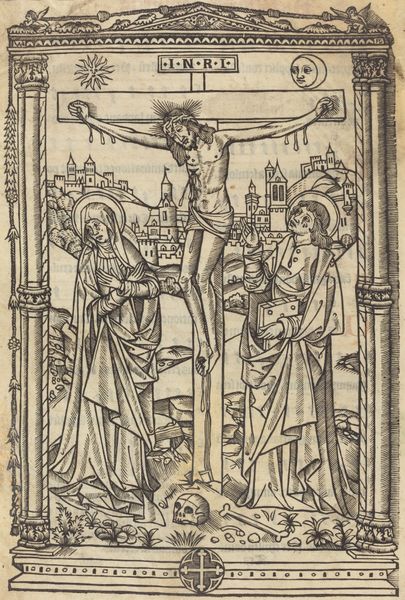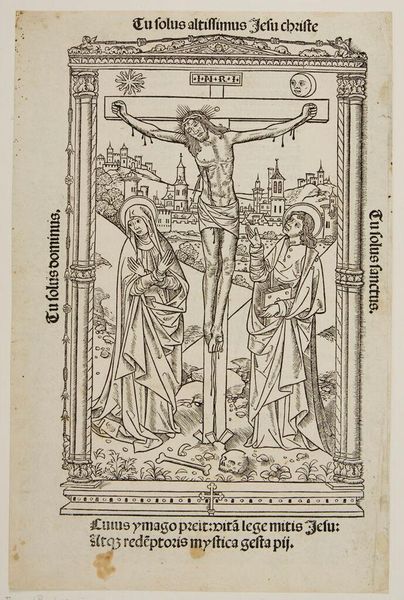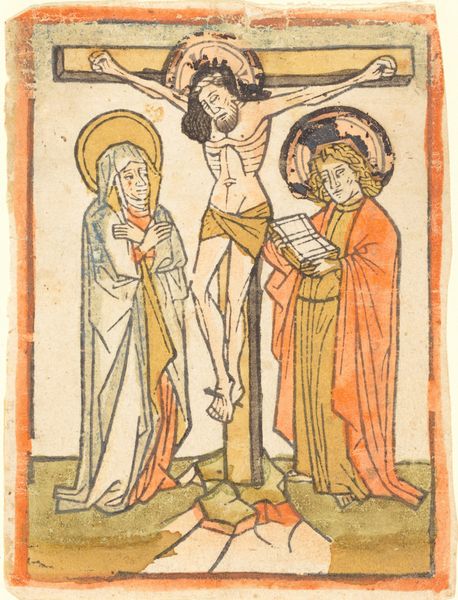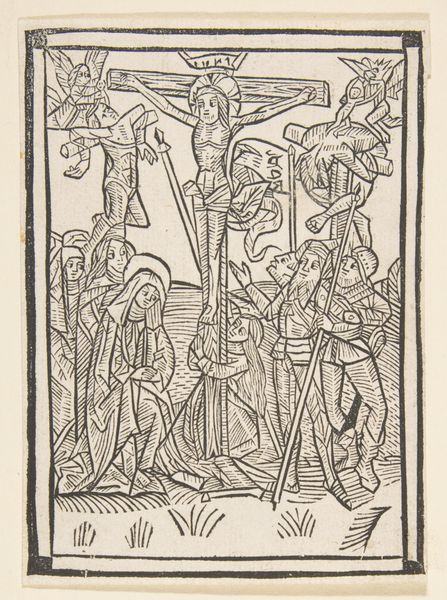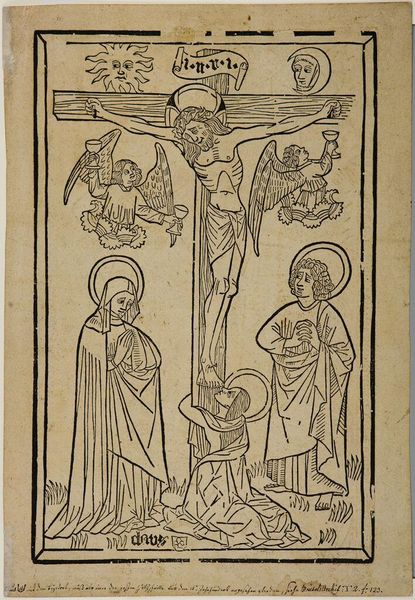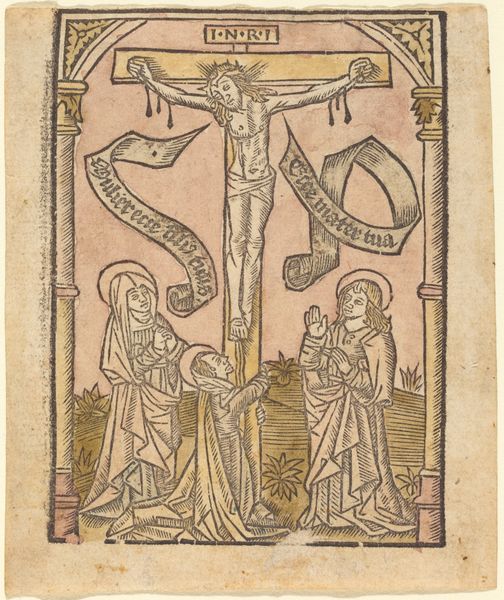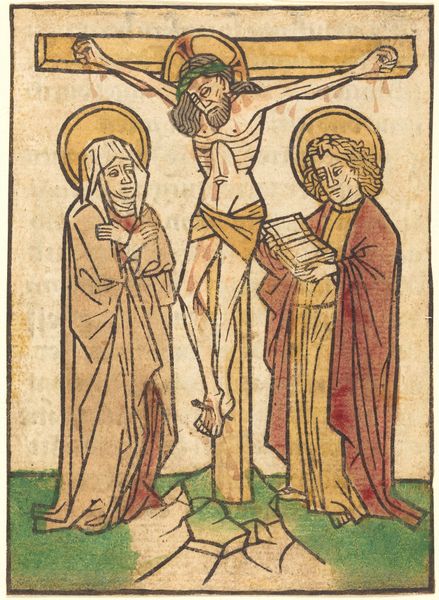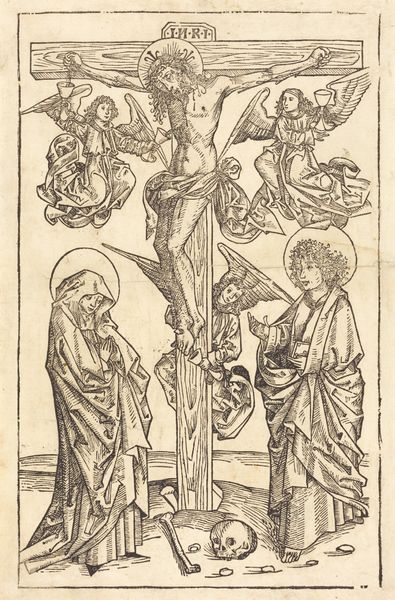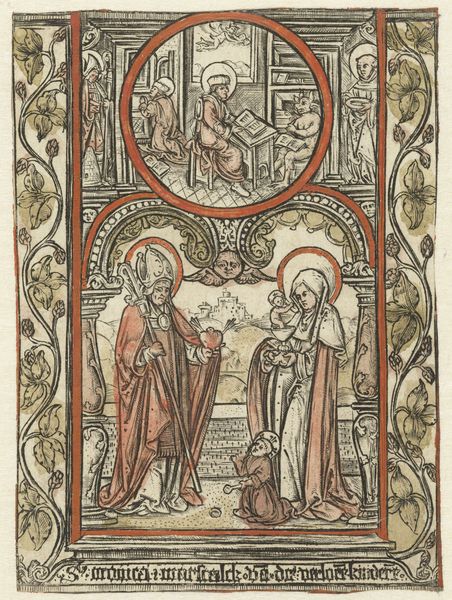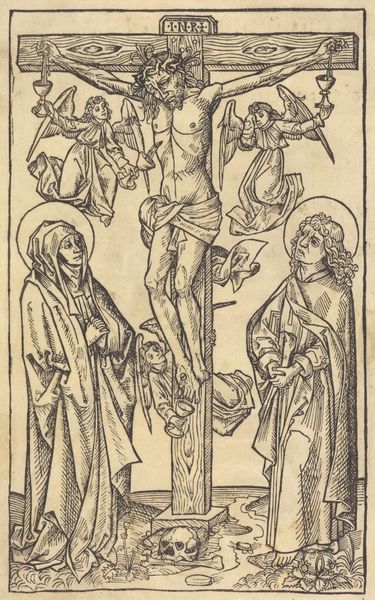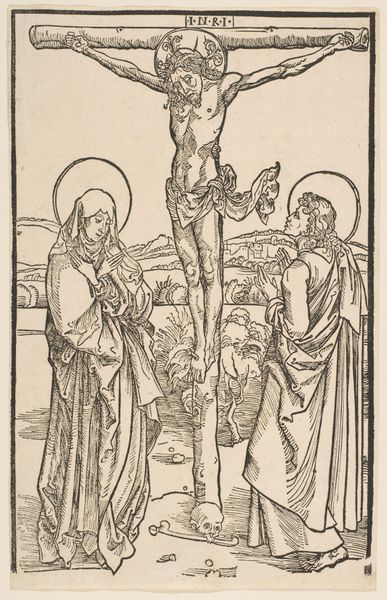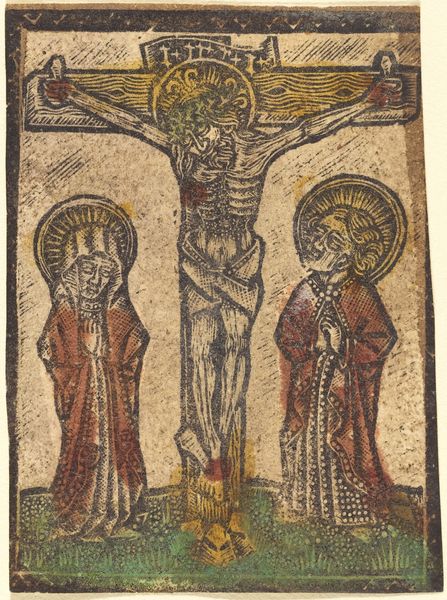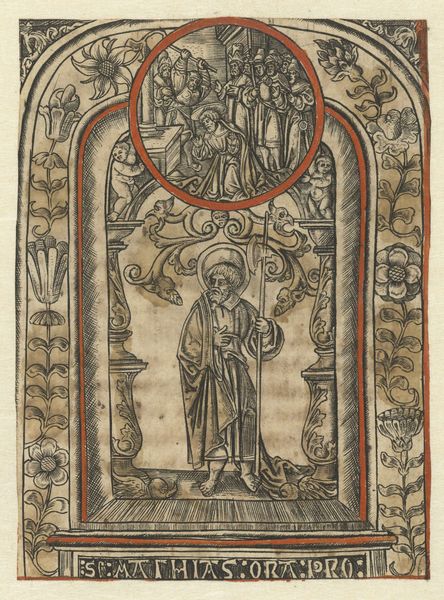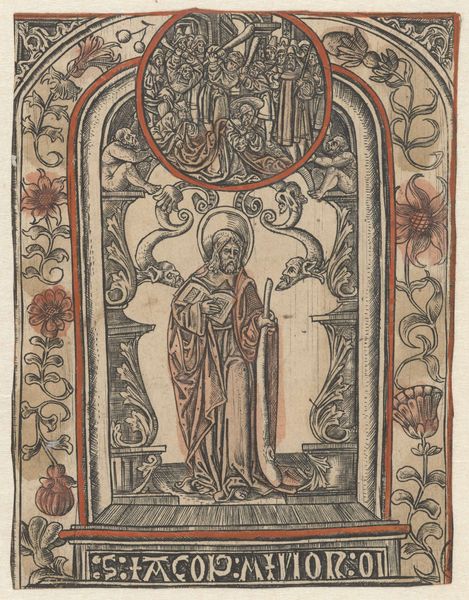
#
toned paper
#
pen drawing
# print
#
pen sketch
#
old engraving style
#
personal sketchbook
#
pen-ink sketch
#
pen work
#
sketchbook drawing
#
sketchbook art
#
doodle art
Dimensions: image: 26.3 × 17.3 cm (10 3/8 × 6 13/16 in.) sheet: 30.9 × 18.7 cm (12 3/16 × 7 3/8 in.)
Copyright: National Gallery of Art: CC0 1.0
Editor: This print, "The Crucifixion," is from around 1485 by an anonymous artist. It’s a pen drawing on toned paper, which gives it a warm, aged quality. The stark black lines create a very powerful image, almost like an early form of graphic design. What stands out to you most? Curator: I find myself drawn to the repetitive, almost manufactured quality of the lines. It's not just about depicting the scene, but also about the *process* of reproduction. This likely wasn’t a singular artwork intended for elite display but rather a print meant for wider consumption. Think about the labour involved. How many prints were made? Who were they for? What were their intended use, devotional or decorative? Editor: So, you are focusing on the printing process and how it might have affected its reception? I hadn't considered the economics of it all. Curator: Exactly! Consider the toned paper. Was this a luxury or simply the cheapest option? It affects how we perceive the scene. It's a commercial object as much as a devotional one, shaped by materials and economic constraints. The level of detail might indicate something of a commodity, made to meet the growing demand. How might such mass production have democratised religious iconography, and what does that mean? Editor: It almost feels like considering who made the artwork is important, and considering where the paper, ink, and labor came from tells its own story. Curator: Precisely! Each line, each shade, echoes choices about production, consumption, and accessibility in a late 15th century context. Editor: Thanks, I learned how the medium really can change the meaning. Curator: And I found it interesting to unpack our assumptions about ‘high art’ by engaging with its mode of material production.
Comments
No comments
Be the first to comment and join the conversation on the ultimate creative platform.
